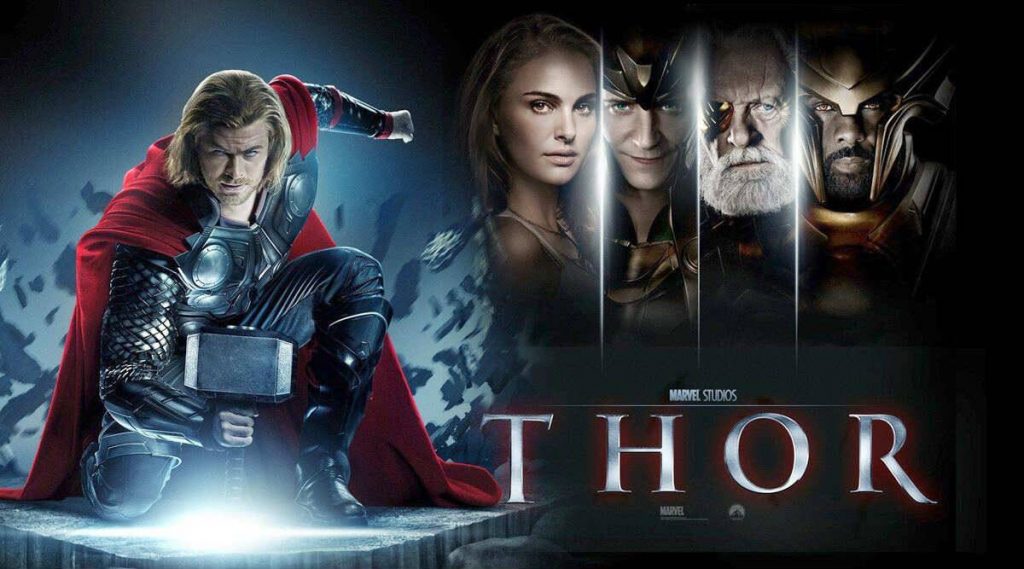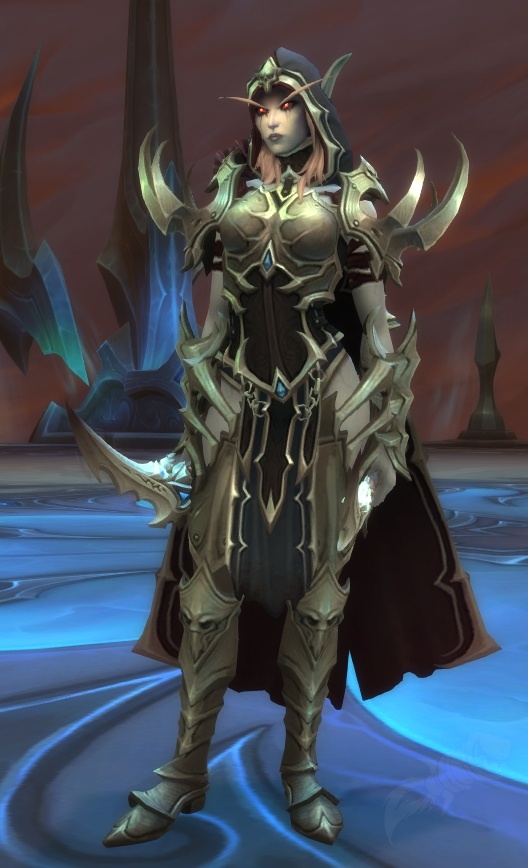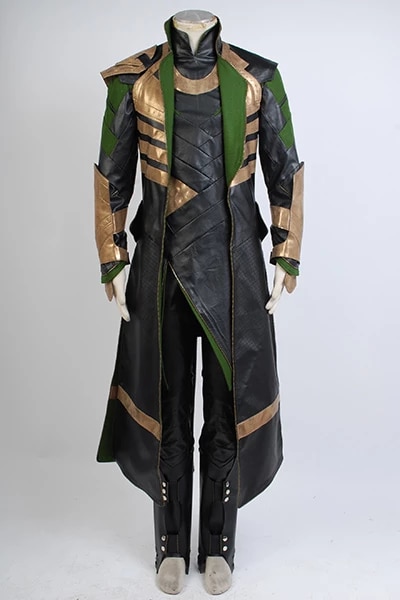By Katarina Birkedal[i]
In my previous thought piece, I wrote that in order to understand – and, ultimately, change – how war is perpetuated in deed and thought, we must pay attention to war narratives. In this thought piece, I want to argue through the example of cosplay that conscious reproduction – which is to say, a deliberate use and/or retelling of a narrative – can be one such means of mitigation.
For many, our first and foremost encounter with war occurs through popular culture, whether that be games,[ii]blockbuster films, comic books, or hit TV. These stories help us make sense of the world and shape our attitude and behaviour in our encounters with it.[iii] As such, popular culture becomes myth in the Barthian sense, which is to say that they are stories that turn their ideas into invisible truths.[iv] In the case of popular culture, and as relates to Visualising War, these myths form our understandings of who commit what kinds of violence for which reasons.[v]
The concept of martial politics is useful here. This is the term put forward by Alison Howell to describe the always ongoing and shifting process by which gendered, racialised, queered and classed discourses and values can help maintain and further militarism – and all its attendant institutions and behaviours – as natural, normal, and desirable.[vi]
Let us take the 2011 film Thor as an example.[vii] The film, which is the first cinematic treatment of Marvel’s interpretation of the Norse gods and their home of Asgard,[viii] centres around the titular character Thor, the god of thunder, his brother Loki, the god of mischief, and their father Odin, whose godhood the film does not specify, but which ranged from war to poetry.[ix] The focus of the film is Thor’s journey from hubris and disgrace to worthiness, which he attains by his eventual preparedness to die to protect those ‘weaker’ than himself. The film figures these people as civilians, represented chiefly by two white women and an older white man.

For reasons of space, I will not here go into the mythologies and cultural contexts from which these characters stem. However, this is not to say that these are irrelevant; on the contrary, though its treatment of the mythology and culture of the Norse is at best deliberately unfaithful, the film makes more sense the more aware of these backgrounds the viewer is. What I will point to by way of context, is the burden of white nationalist appropriation of Viking imagery; a burden that the film does little to alleviate. With the exceptions of Idris Elba’s character Heimdall and Tadanobu Asano’s character Hogun, it is sadly devoid of speaking characters of colour.[x] As a consequence, in addition to the lack of representation, the film reiterates certain colonial gender notions: of white femininity as pure, domestic, and vulnerable, and of white masculinity as heroic, violent, and bearing the ‘burden’ of protection.
In this understanding of gender, there is no room for divergence from the binary; the characters of Thor and Loki are particularly good examples of this. Thor’s return to godhood is symbolised by his wielding of the hammer Mjølnir, which he uses to spectacular effect: when he fights, he dominates the entire landscape with lightning, tears it apart with wind and impact, and lets his hammer propel him through the skies.


Immagini
By contrast, Loki is slighter – a feature played up by the costuming, which makes his collars a little too wide – and fights with magic and throwing daggers, for which he is mocked. The only time Loki’s violence nears the same levels as Thor, he enacts it via machine weaponry, and it is decried as simultaneously excessive and cowardly. At the end of the film, he lies immobilised by Thor’s hammer on the Rainbow Bridge, which Thor subsequently destroys. The filmic depiction of Loki grants him a queered sort of monstrosity, but he is also canonically queer – genderfluid, pan/bisexual, and posthuman; the narrative significance of the defeat of such a character upon something called the Rainbow Bridge needs hardly be elaborated much further.[xi]
To be clear, I am not accusing the makers of this film of deliberately reinforcing trans- and homophobic, racist, and misogynistic martial politics. Moreover, by discussing the film on its own I am here ignoring the complexities introduced to the characters, places, and story through the film’s sequels.[xii] Nevertheless, by following certain tropes of storytelling about war and conflict – and the sorts of values associated with being a hero and a good soldier in such circumstances – the reiteration of these politics is the result. What is more interesting, arguably, is the use fans make of this story and its tropes, in particular through cosplay.
Cosplay (the word is a portmanteau of the words ‘costume’ and ‘play’) is the activity of making – recreating – and wearing the look of a particular character. The process encompasses hair, makeup, and costume, but also to a certain extent entails acting like the character in question. In other words, ‘[cosplaying] is a social parody-performance that situates the cosplayers bodily and affectively within popular culture narratives.’[xiii] Wearing cosplay entails the embrace of a specific otherness, whereby the cosplayer gains something of the feeling of what it is like to be that other. As such, it also fits into a long history of mask-wearing, masquerade, ritual, and costume, insofar as it is a process of transformation and liminality, where self is not quite self, and other is not quite other.[xiv]
It is in this sense that cosplay is an interesting example of exploring and questioning martial narratives, as the experience of being in cosplay means the cosplayer is exposed to other ways of being – and being received – in the world. Experience is not on its own trustworthy evidence, as it is always already politically entangled.[xv] At the same time, in terms of feeling out our identities, it is the only evidence we have. One must first be made aware of the ways in which the world is differentially accessible according to identity before one can do anything about it; cosplay is one way thing can be accomplished, small-scale and playful though it may be.
Moreover, in embodying the characters from these stories, cosplayers can put them to purposes counter to the politics of the original narrative. By putting themselves literally in the shoes of characters shaped by martial politics, cosplayers intervene in that direct line of meaning-making. This is their character now, their way of visualising their behaviour, meaning, and purpose, so that each instance of cosplay becomes a new retelling – an edge iteration, qua Butler,[xvi] that gives birth to a resignification, and that furthermore becomes sedimented in the body of the cosplayer as a potent potential.[xvii] It is as if the cosplayer says: ‘I will not imagine this character and this story in the way you’ve told me it must – I want it to be like this instead.’ This is cosplay sticking a branch into a wheel.[xviii]
Let us return to the story of Thor, and the character of Loki in particular. In cosplaying Loki, the cosplayer embodies and is able to take enjoyment in and feel empowered by all that queer ‘monstrosity;’ stepping into the ‘mask’ of that character lets the cosplayer feel with them, which consequently questions the film’s assumption of these traits being undesirable. In taking charge of that character – even for a few hours – the narrative around that character is claimed and given a different twist.
Another example, more briefly, is that of the character Sylvanas Windrunner, from the game World of Warcraft (2004-).[xix] She is a monstrous character, formed by trauma and extreme violence to become something as evil as that which harmed her.[xx] Sylvanas has no compunctions against the use of chemical weapons, and uses every conceivable advantage and disadvantage; she is not held back by any ‘arbitrary’ morals when it comes for fighting for what she wants and what she believes is the right cause.

It is fair to say that she embodies many of the othering anxieties the post-Cold War, ‘post-9/11 ‘West’[xxi] ascribes to the world: chaotic, war-prone and violent, feminine, deeply agential, and with no regard for established rules and norms.[xxii]To cosplay a character like Sylvanas, then, is to recognise the self in that other; to step into those shoes is to feel the hurt and the complexity of that story, and to destabilise the facile links between femininity, monstrosity, excessive violence, and irrationality (and over-emotionality). It is also to force a confrontation with one’s own enjoyment of such stories.
As Barthes put it, ‘the best weapon against myth is perhaps to mythify it in its turn’.[xxiii] It is worth emphasising that cosplayers make an active and deep study of their chosen characters, gaining often acute insight into their motivations and behaviours. By understanding the narratives and making the choice to use them actively and, crucially, to different purposes, cosplayers are a good example of this; instead of only letting the story shape them, they also shape the story. Of course, cosplay is only a small example, and hardly presents a solution for the large-scale issue of martial politics. It is also important to note that not all cosplay is always resistant. Nevertheless, it is an encouraging example, as it shows that war stories can be twisted, and put on their heads, to become something empowering and something that engenders empathy, rather than suspicion and difference – even if that twisting occurs in small scales, in unserious spaces, through play.
Postdoctoral Researcher Katarina Birkedal obtained her PhD from the University of St Andrews in 2019. She works on gendered experiences of conflict, manifestations of militarism in popular culture, and the aesthetics of depicted violence. She is using her experience of working across different disciplines and art forms to bring together members of the Visualising War research group who work in very different fields to enhance the project’s interdisciplinarity.
[i] The arguments of this piece are based on the research I conducted for my PhD thesis, Resistance, Reproduction, Attachment: Unsettling gender through cosplay, which was passed with no corrections in June 2019.
[ii] For more on war and games (and, more specifically, wargames), see the two special podcast episodes ‘Visualising Strategy’ and the accompanying blog post, co-produced with the Strategy Bridge-project here at the University of St Andrews.
[iii] See e.g. Kyle Grayson, Matt Davies, and Simon Philpott, ‘Pop Goes IR? Researching the Popular Culture–World Politics Continuum’, Politics29, no. 3 (2009): 155–63.
[iv] Roland Barthes, Mythologies (London: Vintage, 2009), 153-154,158.
[v] Katarina H.S. Birkedal, ‘Embodying a Perpetrator: Myths, Monsters and Magic’, in Perpetrating Selves: Doing Violence, Performing Identity, ed. Clare Bielby and Jeffrey Murer (Basingstoke: Palgrave Macmillan, 2018), 45–46.
[vi] The term ‘militarisation’ is also commonly used, however – as Howell pointed out – that term implies the existence of a pre- or post-militarised civilian utopia, which is not the case. It is also tuned almost solely to gendered discourses, to the exclusion of important intersectional aspects and experiences. Alison Howell, ‘Forget “Militarization”: Race, Disability and the “martial Politics” of the Police and of the University’, International Feminist Journal of Politics 20, no. 2 (2018): 117–36; Cynthia Enloe, Maneuvers: The International Politics of Militarizing Women’s Lives (London: University of California Press, 2000); Linda Åhäll, ‘The Dance of Militarisation: A Feminist Security Studies Take on “the Political”’, Critical Studies on Security 4, no. 2 (2016): 154–68; Katarina H.S. Birkedal, ‘Closing Traps: Emotional Attachment, Intervention, and Juxtaposition in Cosplay and IR’, Journal of International Political Theory, 2019, https://doi.org/10.1177/1755088219830112; Victoria M Basham, Aaron Belkin, and Jess Gifkins, ‘What Is Critical Military Studies?’, Critical Military Studies 1, no. 1 (2015): 1–2.
[vii] Kenneth Branagh, Thor (Paramount Pictures & Marvel Studios, 2011). Many interesting things can be said about the Marvel Cinematic Universe as a whole, and the Thor film-series and Loki TV-series within that. Lack of space prevents extended discussion here.
[viii] It is actually ‘Åsgard,’ but in Marvel’s Americanised use most of the original terms are stripped of their proper spelling and pronunciation. This is perhaps a blessed simplification, given the proliferation of those ‘original’ terms due to the development of old Norse into several different languages. For example, Thor is Tor is Þórr is Þór, and so on. It also presents a good opportunity for distinguishing between the modern and old contexts.
[ix] The domains of Norse gods were wide and varied, often changing from place to place. Thor, Loki, and Odin are no exceptions to this; of these, it is Loki whose diverse responsibilities get most representation in Marvel’s canon – variably the god of mischief, lies, chaos, stories, and evil – but even these omit some aspects. Furthermore, due to the dangerous combination of the passage of time and the Christianisation of Scandinavia, many facets of Norse belief are lost to us today.
[x] I want to stress that a cast lacking in diversity is always a lack; this is also to say that the time and culture the film references was a lot more diverse that we give it credit for today.
[xi] For a more detailed analysis of this film, and of Loki in particular, please see Birkedal, ‘Embodying a Perpetrator: Myths, Monsters and Magic’; for more on the gendering of violence, and the affective potential of stepping into such stories, please see Katarina H.S. Birkedal, ‘Closing Traps: Emotional Attachment, Intervention, and Juxtaposition in Cosplay and IR’, Journal of International Political Theory, 2019, https://doi.org/10.1177/1755088219830112.
[xii] In particular, 2017’s Thor: Ragnarok does a great deal to address these concerns through a sensitive and deeply anti-colonial treatment of Asgard, and the introduction of a more diverse cast and take on the general Asgardian population. The 2021 TV series Loki is likewise significantly more diverse, and furthermore explores Loki’s queerness more openly. Taika Waititi, Thor: Ragnarok (Walt Disney Studios & Marvel Studios, 2017); Kate Herron, Loki (Disney+, 2021).
[xiii] Birkedal, ‘Closing Traps: Emotional Attachment, Intervention, and Juxtaposition in Cosplay and IR’.
[xiv] See inter alia Brit Solli, Seid: Myter, Sjamanisme Og Kjønn i Vikingenes Tid (Oslo: Pax Forlag, 2002); Ing-Marie Back Danielsson, ‘(Un)Masking Gender – Gold Foil (Dis)Embodiments in Late Iron Age Scandinavia’, in Thinking through the Body: Archaeologies of Corporeality, ed. Yannis Hamilakis, Mark Pluciennik, and Sarah Tarlow (London: Kluwer Academic/Plenum Publishers, 2001), 179–99; Mark Pluciennik, ‘Bodies in/as Material Culture: Introduction’, in Thinking through the Body: Archaeologies of Corporeality, ed. Yannis Hamilakis, Mark Pluciennik, and Sarah Tarlow (London: Kluwer Academic/Plenum Publishers, 2001), 173–77; Anton Bierl, Ritual and Performativity: The Chorus of Old Comedy (London: Harvard University Press, 2009); Aoife Monks, The Actor in Costume (Basingstoke: Palgrave Macmillan, 2010); Pravina Shukla, Costume: Performing Identities Through Dress (Bloomington: Indiana University Press, 2015).
[xv] Joan W Scott, ‘“Experience”’, in Feminists Theorize the Political, ed. Judith Butler and Joan W Scott (London: Routledge, 1992), 22–40.
[xvi] See Judith Butler, Excitable Speech: A Politics of the Performative (London: Routledge, 1997); Judith Butler, ‘Performative Acts and Gender Constitution’, in Performing Feminisms: Feminist Critical Theory and Theatre, ed. Sue-Ellen Case (London: The John Hopkins University Press, 1990), 270–82.
[xvii] See Saba Mahmood, ‘Feminist Theory, Embodiment, and the Docile Agent: Some Reflections on the Egyptian Islamic Revival’, Cultural Anthropology 16, no. 2 (2001): 202–36.
[xviii] See Sara Ahmed, Willful Subjects (Durham and London: Duke University Press, 2014).
[xix] The martial politics of this game will be explored further in a future episode of the Visualising War podcast, where I will be talking to YouTube World of Warcraft commentators Taliesin and Evitel. In light of the recent lawsuit by the State of California against Activision Blizzard (producers of World of Warcraft) on charges of discrimination and sexual harassment in the workplace, I want to make clear the following: such behaviour is repulsive in the extreme, and the victims should be believed and supported.
[xx] For more on typical narratives of female perpetrators, see Laura Sjoberg and Caron Gentry, Mothers, Monsters, Whores: Women’s Violence in Global Politics (London: Zed Books, 2007); Caron E Gentry and Laura Sjoberg, Beyond Mothers, Monsters, Whores: Thinking About Women’s Violence in Global Politics (London: Zed Books, 2015).
[xxi] More on that in my next thought piece.
[xxii] See e.g. Mary Kaldor, New and Old Wars: Organized Violence in a Global Era, 2nd Edition (Cambridge: Polity Press, 2006). Though I should say that Kaldor has since revised her thesis to embrace more nuance.
[xxiii] Barthes, Mythologies, 160–61.


